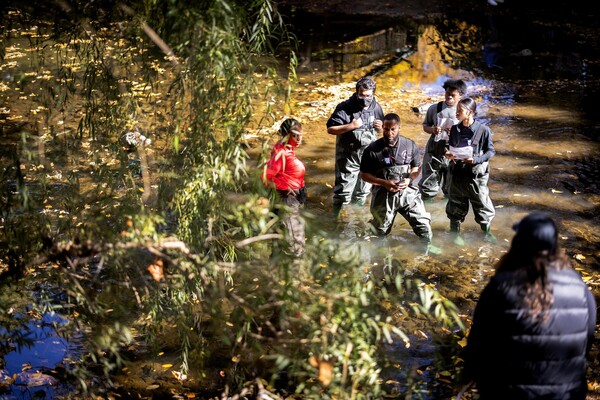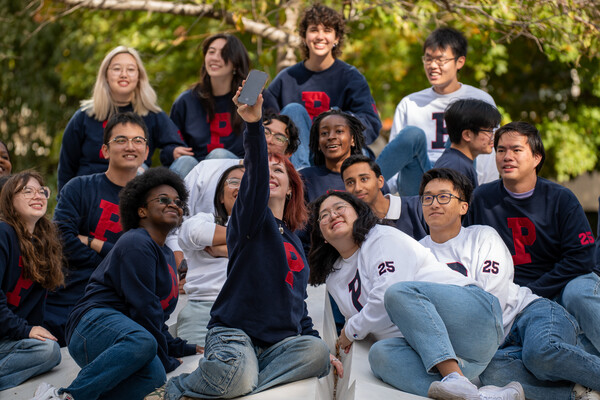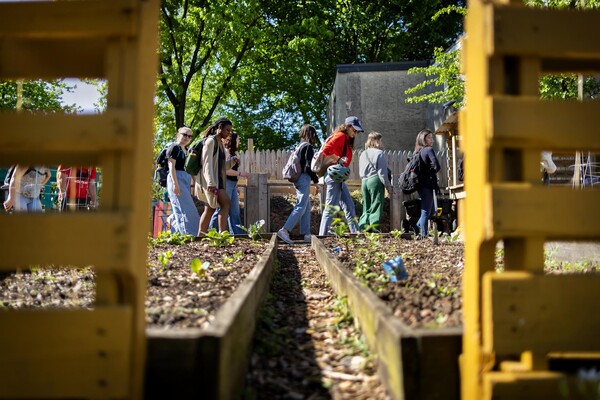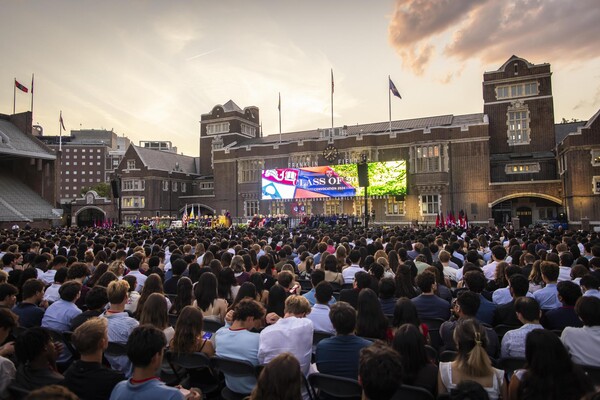“I used to give our high school librarian a hard time, never knowing that I’d be spending 33 years of my adult life in the library.”
When James Curtiss Ayers was playing basketball at a junior college in the northern Mojave Desert in the mid-’60s, he was voted Most Inspirational Player. He earned that title by encouraging the other players, and “doing a lot of the grunt work that they don’t want to do, like setting picks, going for loose balls,” he said. He admires the Philadelphia 76ers’ George Lynch because “he’s a fundamental player and he does what the coach asks him to do and he makes everybody better as well.”
During Ayers’ 33 years at Penn, the first five spent in the Medical School library and the rest in University Archives, that sort of steady, unflashy application of his talents seemed to apply. “I’m definitely a team player,” Ayers said, adding his pleasantly gravelly chuckle.
On a recent afternoon, not long after he’d had knee surgery, the 6-foot 2-1/2-inch Ayers walked gingerly among the Archives’ rows of materials, where he might help anyone from scholars to architects to members of the Association of Cricket Statisticians find materials about Penn or Penn faculty and alumni. And he figures he’s almost at the end of a four-year project of entering information about publications such as catalogs and alumni publications into computer files.
“I think the most important skill my job requires is being undaunted by how big a task may seem,” he said.
Q. What’s in the archives?
A. The most important things in the archives, I think, are the personal papers of alumni and professors. It’s correspondence and memorabilia.
One of our largest collections is the Alexander papers — Sadie and Raymond Pace Alexander, two African American lawyers in the ’30s, ’40s, ’50s who were very upper-middle-class African Americans in the city. We have 223 cubic feet of their material. Right now, that’s the most heavily used collection.
Q. Who uses it?
A. People who are interested in the legal profession. Raymond Pace Alexander had some very famous cases. I think we’ve had at least three undergraduate students who used their material for their senior honors thesis. Then we have people that are interested in cases that come in all the time. We had two students, one was at Princeton, who was interested in Raymond; he’s writing a book. And there’s another student who’s doing his graduate work at Temple, he’s writing a dissertation on him. So they’re very popular.
Q. Obviously, they went to Penn. What did they study?
A. Sadie got five degrees. She’s the first African-American woman in the nation to get a Ph.D., first in the state to be admitted to the bar. Raymond got his law degree from Harvard. Both of them did their undergraduate work at Penn. Raymond was a judge, on the City Council and he was one of the most famous African American lawyers in the city. I think he died around 1978, ’79.
Q. What topics do students research?
A. One of the more popular things is the Black Bottom area that the [Science Center] is in now. That was heavily researched last spring semester for papers. What happened was, redevelopment came in and took people’s houses they were living in. But scholars can’t even agree where the Black Bottom geographically began and where it ended.
The high-rise dorms are another popular topic. They research why a dorm was named what it was, the architects.
Q. Are there any other files you find interesting?
A. There’s a file about Dr. Hideyo Noguchi — a Japanese doctor in the pathology department. We’ve had a lot of people coming in, doing research on him because he died as a result of being exposed to yellow fever. We’ve had Japanese film crews coming in.
Then we had John B. Thayer III; he was a survivor of the Titanic.
Q. Are there Penn celebrities that you get a lot of requests for?
A. Donald Trump. But to no avail. But they always ask for a college pig shot. We don’t have any. He didn’t take one. And Michael Milken. Candace Bergen. Rendell, of course.
Q. What attracted you to working in a library and then an archives?
A. [laughs] I think about this sometimes and I have to laugh. When I was in high school, I used to give our librarian a hard time, just being a little pest. I never thought that that’s where my career path was going to be. I would give her a hard time, never knowing that I’d be spending 33 years of my adult life in the library.
Q.What changes have you seen over the years?
A. When I first came to the archives in 1973, I had a manual typewriter and we had World War II surplus furniture and we had at that time about a 30-year-old microfilm reader. No carpet on the floor. Then the technology part came in. I had to learn some skills with the computer.
Q. What’s kept you here all these years?
A. I like working with people and it’s been a wealth of knowledge that’s been on this campus that I would never get anywhere else. I developed some strong bonds with other individuals that work on campus. Of course, the benefits aren’t bad.







